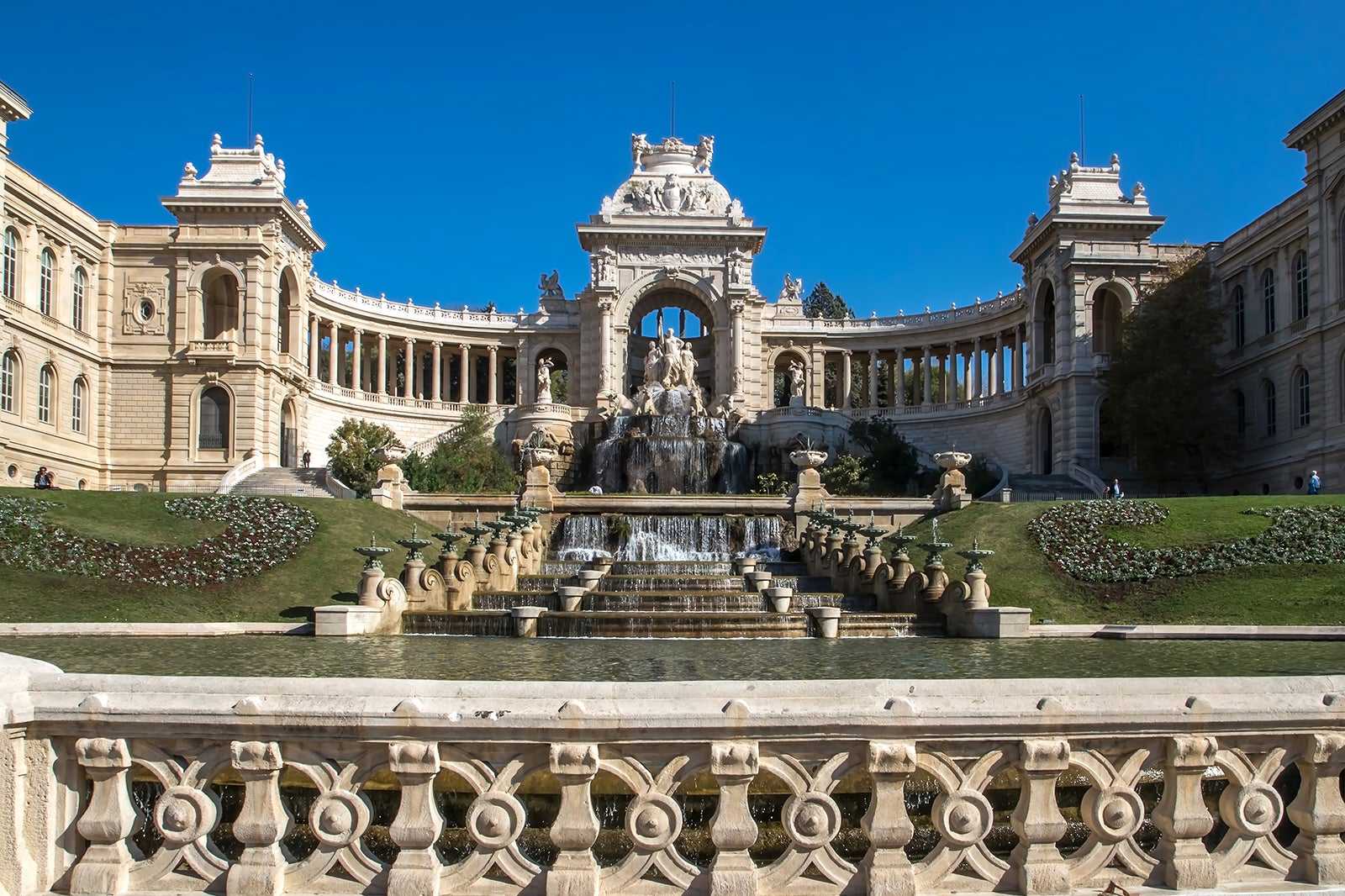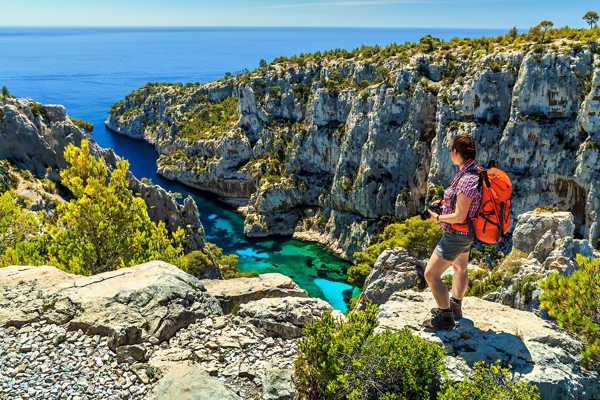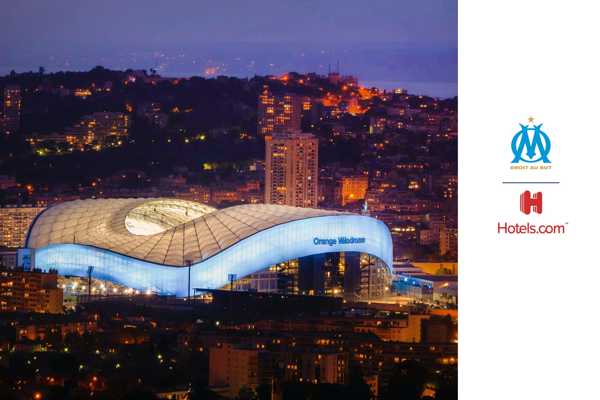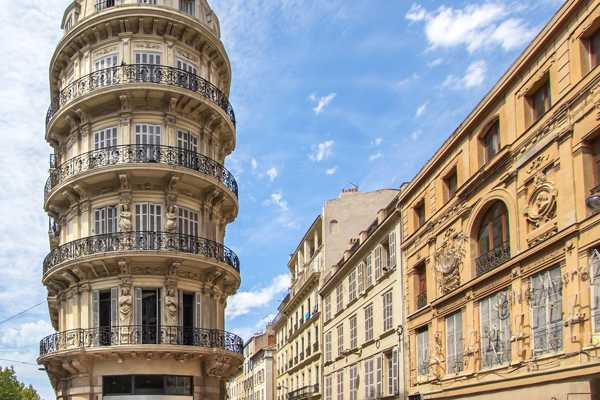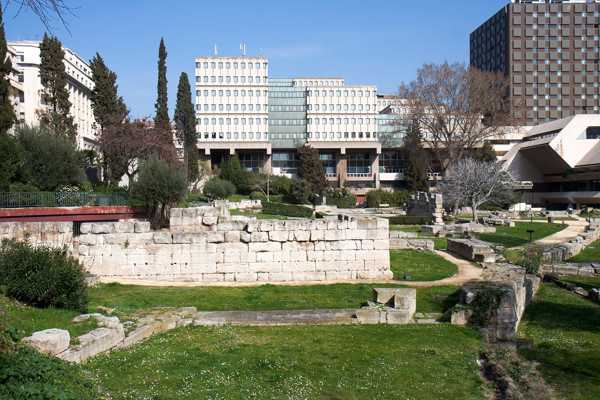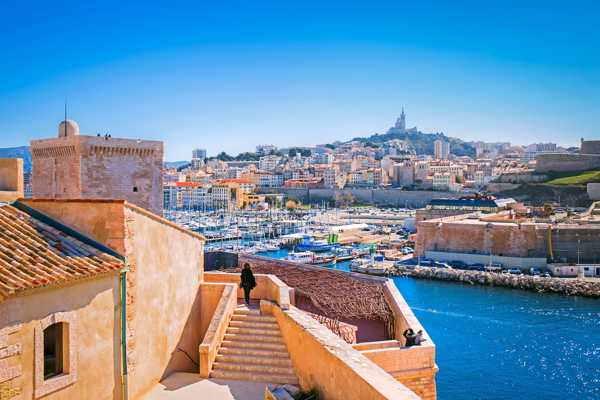The Palais Longchamp is a monument in the Parc Longchamp in Marseilles. Although it looks like a palace, its name is a misnomer. Instead, it houses the Musée des Beaux-Arts and the Museum d'Histoire Naturelle. Both museums flank a fountain called the Château d'Eau. This fountain holds the key to why the Palais Longchamp was built.
Musée des Beaux-Arts houses a collection of paintings and other works of art dating from the 16th to the 19th centuries. Museum d'Histoire Naturelle is the city’s natural history museum with over 80,000 animal specimens and a further 20,000 plant exhibits.
Palais Longchamp in Marseille - one of the highlights of 11 Best Things to Do in Marseille and 10 Most Instagrammable Places in Marseille (Read all about Marseille here)
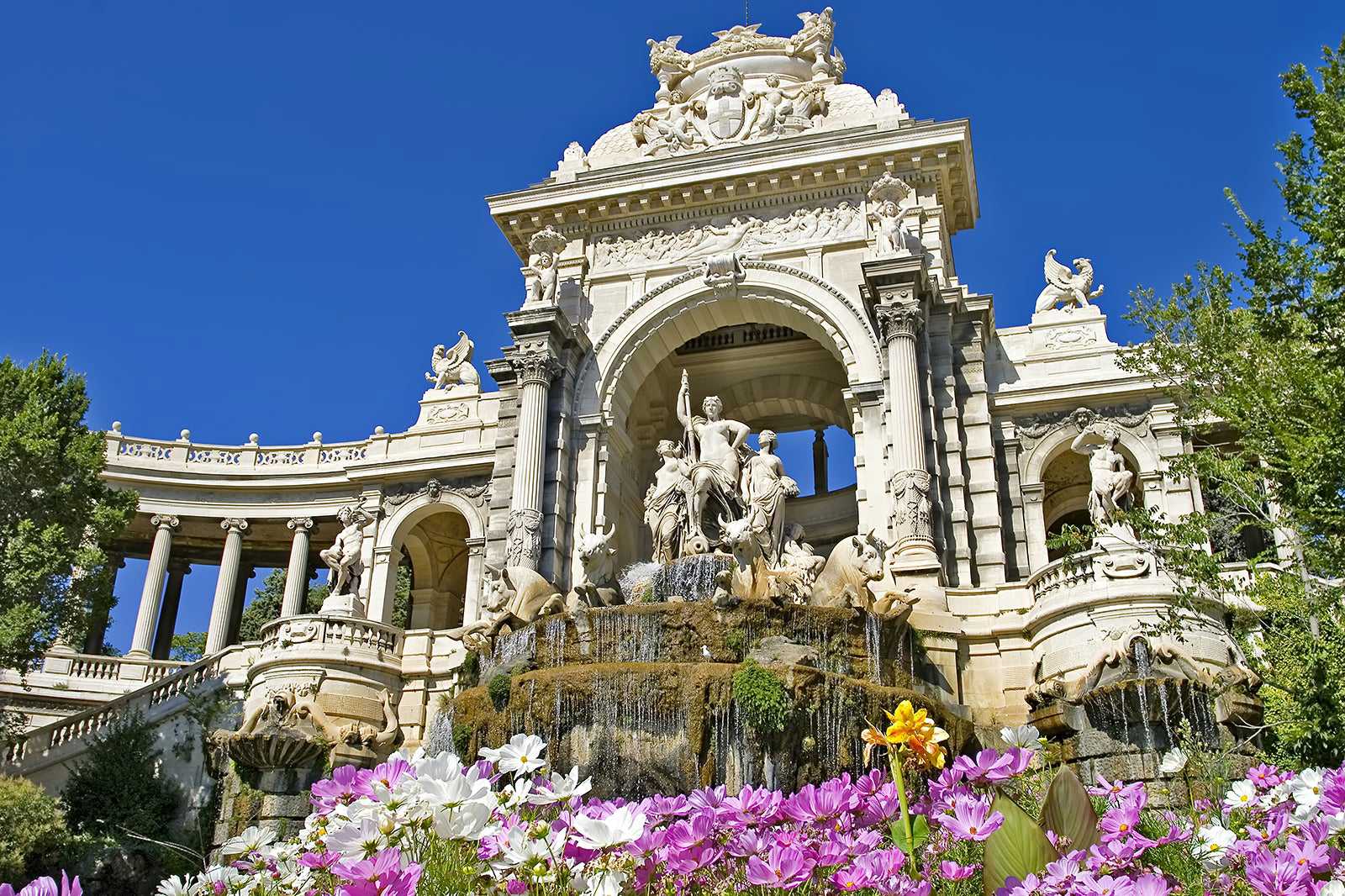
A brief history of Palais Longchamp
Although Marseilles sits beside the sea, in the past, the city was plagued by drought. The long hot Mediterranean summers meant that the authorities often had to ration water and tempers frayed as people argued about supply. A solution had to be found as the lack of water was taking its toll on the health of many residents of Marseilles. A cholera outbreak in the 1830s, which would eventually kill 100,000 people across France, focused minds and freed up budgets.
Engineers came up with a plan to create a series of 18 aqueducts, several underground waterways, and an 80-km-long canal. The gravity-fed scheme took water from a much more reliable source, the Durance River in the Alps. Together, these structures would bring water to the city. It took them 15 years to figure out how to do it, but the canal system was finished in 1849. Today, Marseilles still gets around two-thirds of its water from the Durance.
Once the water was flowing, the city authorities decided that this incredible feat of engineering should be commemorated by a grand monument. The Palais Longchamp was the vision of architect Henri-Jacques Espérandieu. It celebrated life, fertility, and of course, ingenuity. But it too was years in the making. The Duke of Orleans laid the foundation stone in 1839, but the monument’s inauguration didn’t take place for another 30 years.
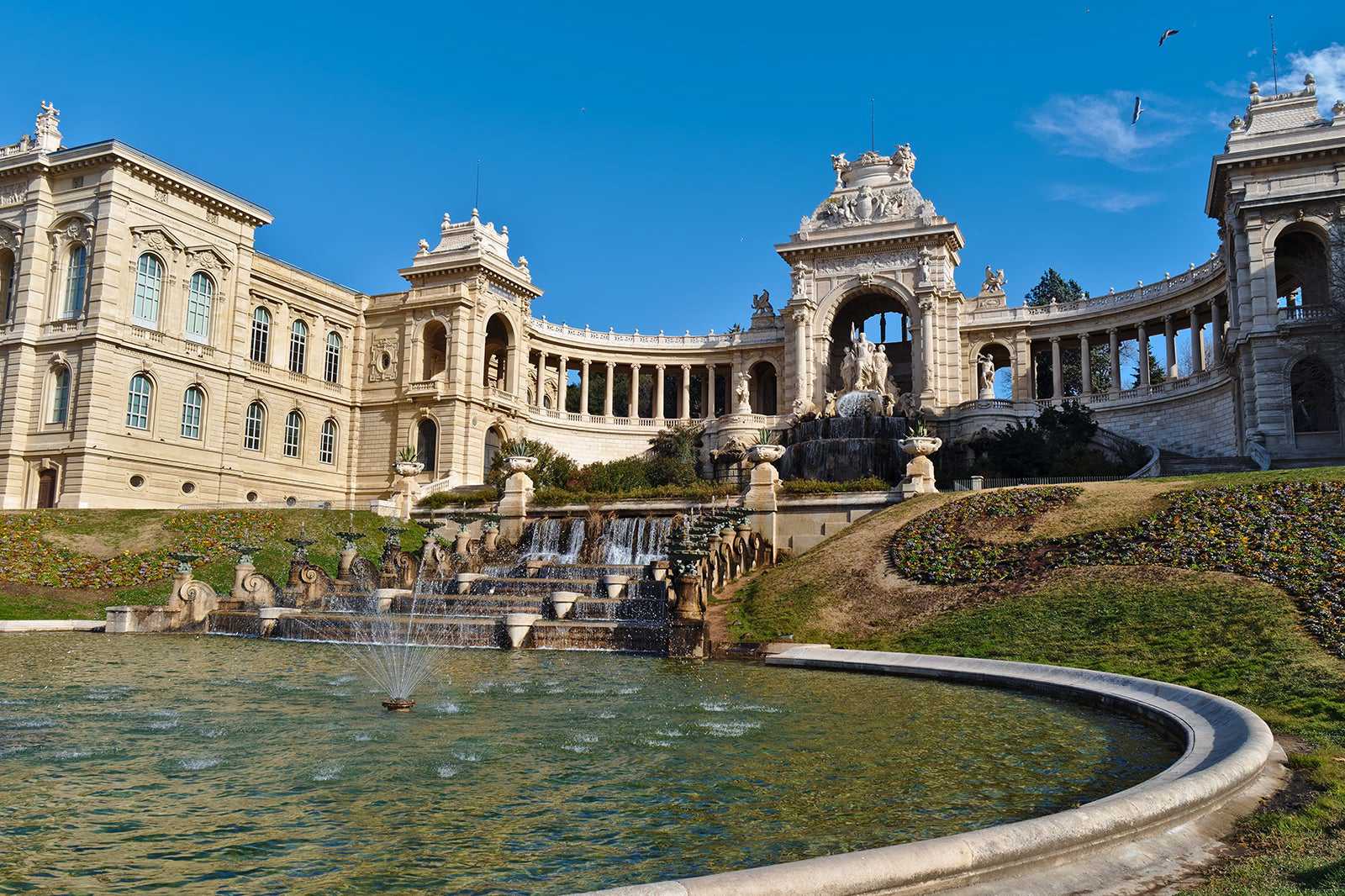
What are the highlights and features of the Palais Longchamp?
Today, the Palais Longchamp is one of the city’s most recognisable landmarks. It is the centrepiece of a green space called the Parc Longchamp. There, the old astronomical observatory has been repurposed as a museum and planetarium. The park also contains what was once the city’s zoo which unfortunately closed in the 1980s. Many of the ornate cages and pavilions remain, though their captive residents are long gone. A children’s theatre occupies what used to be the giraffe house.
But it’s the monument itself that is the showstopper. It is a magnificent structure with plenty of embellishments. Lions and tigers flank the entrance, while stone staircases lead to the museums. At the base of the fountain are 4 Camargue bulls. They’re depicted pulling a chariot. In it are 3 females: the central figure represents the Durance while women on either side depict grapes and wheat.
The monument also features a stone grotto adorned with stalactites and nymphs. As befits a monument that was born out of a disaster driven by drought, the water that’s used is recycled. Water from the pond at the bottom of the Château d'Eau flows into underground pipes. It re-emerges as a waterfall and feeds a dozen bronze spouts. Barely a drop is wasted, except what’s lost to evaporation.
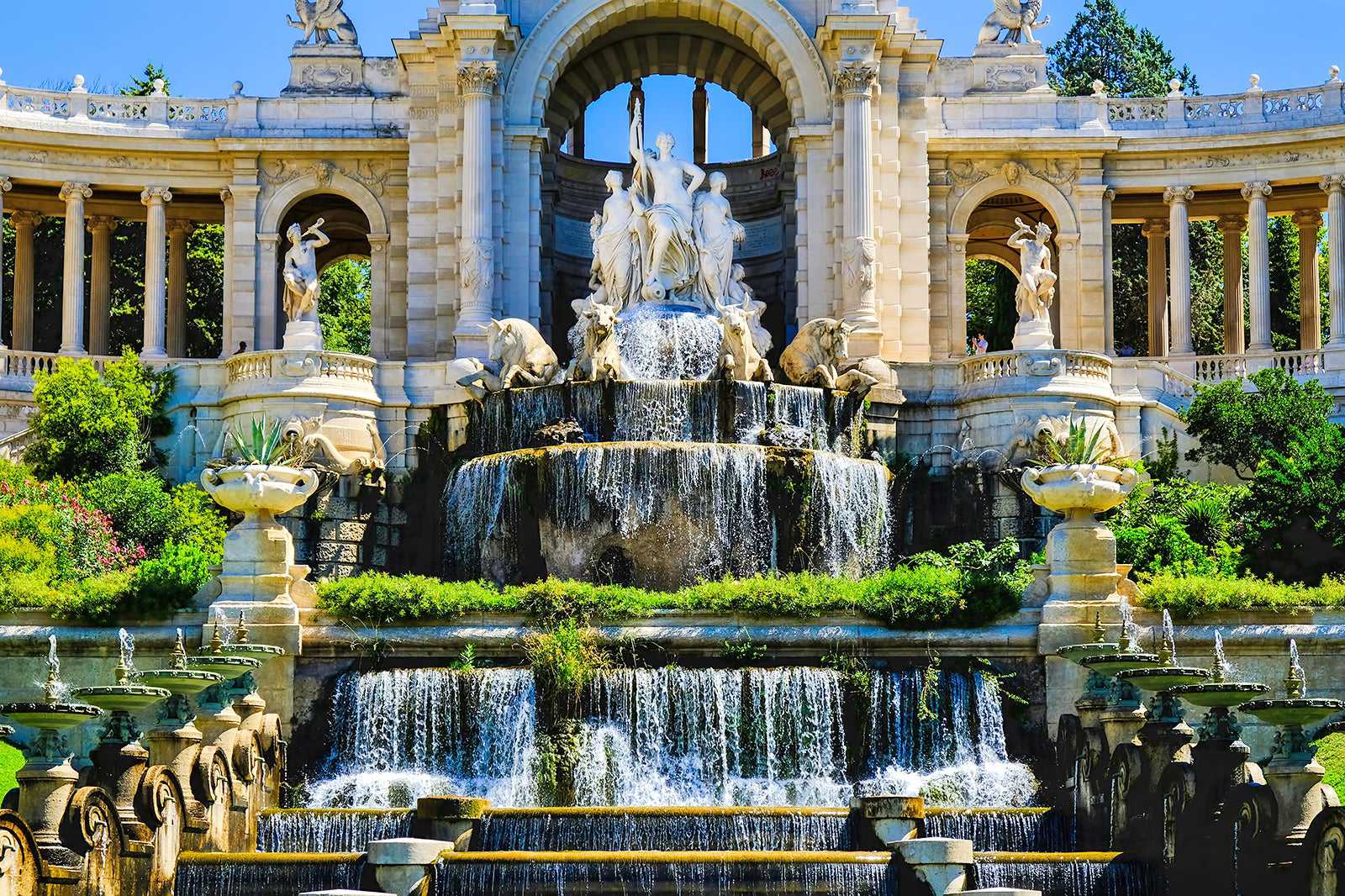
Good to know about the Palais Longchamp
The gardens that extend behind the Palais Longchamp are also delightful. They’re recognised by the French Ministry of Culture as among the Remarkable Gardens of France (Jardins remarquables). Part of the park has been planted as an English garden – several trees including a plane, oak, and elm, are well over a century old. Much of the space is a classic French-style garden known as the Jardin du Plateau. Both are popular with locals and visitors.
The Marseille Metro line 1 is one of the easiest ways to get to Palais Longchamp. Alight at the Cinq Avenues Longchamp subway station, then walk for about 5 minutes to reach the monument. Alternatively, take tram line 2 or bus 81.
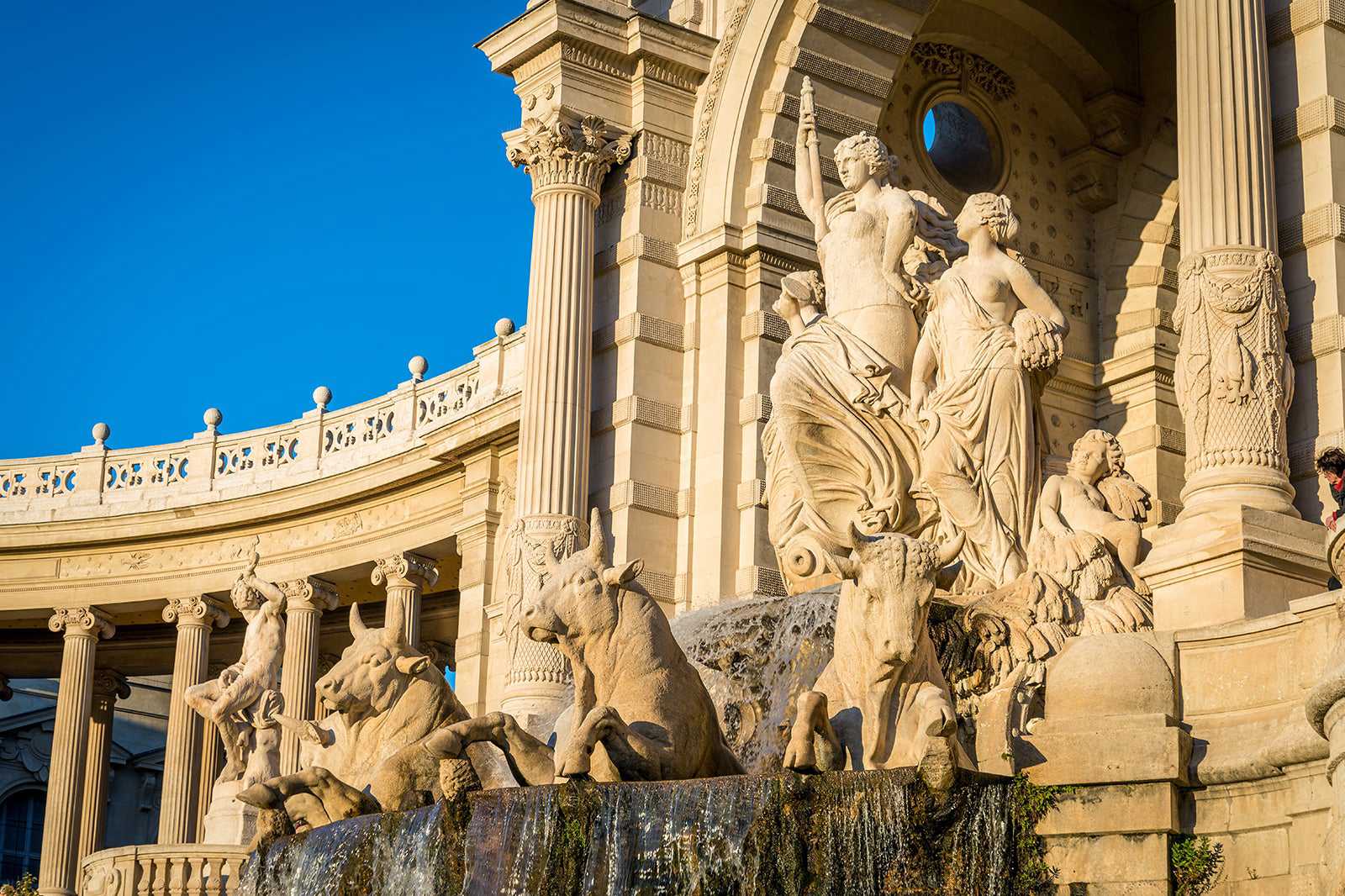
Palais Longchamp in Marseille
Adress: Boulevard Jardin Zoologique, 13004 Marseille, France
Öppettider: Daily from 7 am to 6.30 pm
Telefonnummer: +33 (0)4 91 55 25 51
